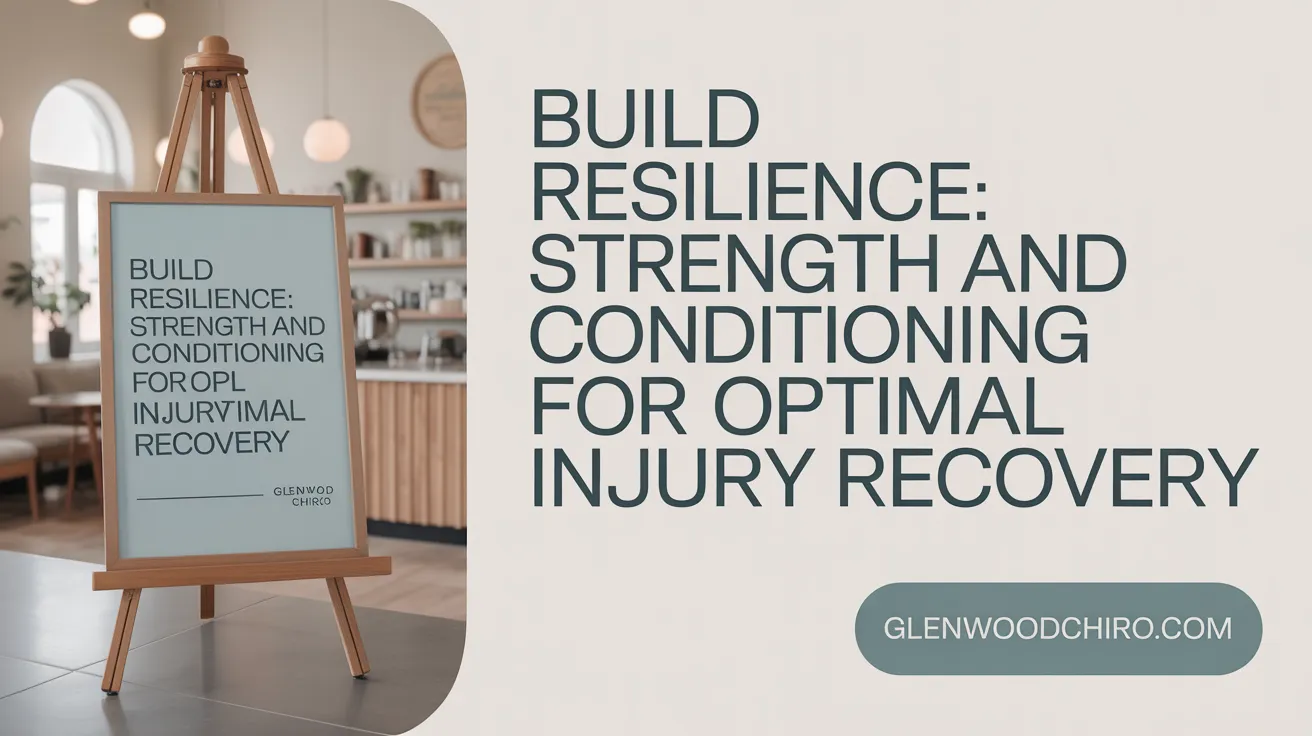Understanding Rehabilitation: Foundations for Recovery and Health
Defining Rehabilitation and Its Global Importance
Rehabilitation is an essential health service aimed at optimizing functioning and reducing disability in individuals with health conditions. Globally, about 2.4 billion people live with conditions that could benefit from rehabilitation services. Its scope goes beyond restoring physical function to include promoting health, preventing disease, and providing treatment and palliative care.
The Multidisciplinary Nature of Rehabilitation
Rehabilitation involves a collaborative effort among a diverse range of professionals. This multidisciplinary team typically includes physiotherapists, occupational therapists, speech and language therapists, psychologists, medical specialists in physical medicine, and rehabilitation nurses. These professionals work together to deliver tailored programs that address the unique needs of each individual, whether it be improving mobility, communication, or cognitive function.
Impact on Health, Independence, and Quality of Life
Effective rehabilitation supports individuals in regaining independence and participating fully in daily activities such as work, education, and family life. It reduces health complications, prevents disability progression from chronic diseases like stroke, diabetes, and cancer, and facilitates healthy aging. By enabling people to live more autonomously, rehabilitation also lessens the burden on caregivers and healthcare systems, ultimately contributing to better social and economic outcomes worldwide.
The Three Phases of Post-Surgical Rehabilitation

What are the typical phases involved in post-surgical rehabilitation?
Post-surgical rehabilitation is a structured process divided into three main phases, each with targeted goals to facilitate a safe and effective recovery.
Acute Phase: Pain Management and Mobility
The acute phase immediately follows surgery and focuses primarily on pain control and restoring basic mobility. Early-stage exercises aim to activate muscles gently and improve joint movement, avoiding stiffness and complications. Managing inflammation and ensuring comfort are crucial during this stage to lay a foundation for further recovery.
Strength Phase: Rebuilding Stability and Muscle Strength
The strength phase builds upon the initial improvements by focusing on restoring muscle strength and joint stability. Rehabilitation exercises become more resistance-based, targeting slow, controlled movements such as squats, lunges, and single-leg exercises. This phase addresses neuromuscular function and corrects compensatory movement patterns to reduce the risk of future injury.
Performance Phase: Sport-Specific Drills and Advanced Training
The final performance phase prepares the individual for return to sport or high-level activity. It involves advanced, sport-specific training such as proprioception drills, reaction training, plyometrics, and movement refinement tailored to the demands of the sport. Emphasis is placed on power, speed, endurance, and confidence in movement, ensuring readiness for game situations or rigorous activity.
Custom rehabilitation plans are essential, considering the specific biomechanical demands and training loads of the individual’s sport or daily activities. Professional guidance throughout these phases is critical to promote a holistic rehabilitation approach encompassing physical readiness and mental confidence. Glenwood Springs, Colorado, offers specialized rehabilitation services that incorporate these structured phases, particularly benefiting local athletes undergoing surgical recovery.
Bridging the Gap: Transitioning from Rehab to Peak Performance

What Are the Limitations of Standard Sports Rehabilitation?
Standard sports rehabilitation effectively reduces pain, restores range of motion, and rebuilds strength and stability post-injury. However, it often falls short of fully preparing athletes for the multidimensional demands of high-level sports. Key weaknesses include uncorrected compensatory movement patterns and lingering neuromuscular deficits that do not adequately challenge the athlete's readiness for competitive play. For more details, see sports rehab essentials, reducing pain after injury, restoring range of motion, regaining strength and stability, risk of re-injury after rehab.
Why Is It Important to Transition from Sports Rehab to Performance Training?
Although sports rehabilitation restores pain-free movement and strength, without a structured transition to sport-specific performance training, athletes increase their risk of re-injury. This is primarily due to unresolved weaknesses and compensatory patterns that persist beyond the rehab phase. A comprehensive transition includes assessments of neuromuscular readiness, biomechanics, and sport-specific demands, ensuring the athlete's body is fully prepared for return to competition. Learn more about structured recovery-to-performance program, neuromuscular readiness before return, personalized transition plans for athletes.
How Are Neuromuscular Readiness and Biomechanical Factors Assessed?
The transition phase involves detailed evaluations such as balance, proprioception, muscular control, joint loading, and biomechanical movement analysis tailored to the athlete's specific sport and playing role. These assessments identify residual deficits and movement inefficiencies that must be addressed before progressing to higher-level training. Related topics include balance and proprioception testing, endurance and muscular control, joint loading and biomechanics.
What Does Progressive Overload and Sport-Specific Conditioning Involve?
Post-rehab training includes progressive overload principles — gradually increasing intensity through reactive agility drills, plyometrics (like box jumps and lateral hops), and strength conditioning. This approach rebuilds neuromuscular coordination and elastic strength needed for sport performance. Importantly, training is individualized according to the athlete's injury history and sport-specific movement patterns to optimize functional recovery and prevent re-injury. Explore more on progressive overload in training, reactive agility drills, plyometrics and strength conditioning.
Personalized Rehabilitation Plans: Tailoring Recovery to Individual Needs

How do personalized rehabilitation plans contribute to effective recovery?
Personalized rehabilitation plans are essential for effective recovery because they consider the unique demands of an individual's sport, the specific nature of their injury, and their biomechanical profile. This tailored approach ensures that rehabilitation targets the precise weaknesses and movement patterns that need correction, helping to reduce the risk of re-injury and improve functional outcomes.
These plans are developed and executed by multidisciplinary teams in rehabilitation including physiotherapists, occupational therapists, orthopedic specialists, and rehabilitation medical professionals. This collaboration allows for comprehensive care that addresses all aspects of recovery—from physical healing and strength rebuilding to mobility enhancement and pain management in musculoskeletal rehab.
Holistic rehabilitation approach underpins personalized rehabilitation, integrating mental confidence with physical readiness. Mental conditioning in sports recovery is recognized as a critical component, fostering the athlete’s belief in their ability to perform safely and effectively. Rehabilitation goals evolve through phases—from managing acute symptoms to enhancing strength and stability, and finally advancing to sport-specific performance training.
Professional guidance ensures that rehabilitation exercises and progression are both safe and effective, utilizing advanced techniques like proprioception training and neuromuscular retraining tailored to the patient's sport and activity demands. This structured, patient-centered approach facilitates a confident and sustainable return to sport or daily function, optimizing recovery outcomes.
The Role of Strength and Conditioning in Injury Recovery

What role does strength and conditioning play in rehabilitation?
Strength and conditioning are vital components of injury rehabilitation. They focus on retraining the neuromuscular system by emphasizing essential movement patterns such as squatting, hinging, lunging, and single-leg exercises. These movements are critical for full recovery and help restore functional strength while reducing the risk of re-injury.
Training across multiple planes of motion
A comprehensive rehab program trains the body across all planes of motion—sagittal, frontal, and transverse. This multidimensional approach prepares patients for the diverse physical demands they will face in daily activities or sports, ensuring balanced strength and movement control.
Use of plyometrics for restoring functional strength
Plyometric exercises, including box jumps, depth drops, and single-leg hops, are incorporated progressively to rebuild elastic strength and neuromuscular coordination. These exercises are essential for regaining power, speed, and reactive agility needed for high-performance activities.
Integrating holistic therapies such as acupuncture and movement re-education
A holistic rehabilitation approach integrates acupuncture and movement re-education alongside traditional strength training. This combination supports pain relief, enhances neuromuscular function, and promotes overall functional restoration. Such multidisciplinary teams in rehabilitation interventions optimize recovery, helping patients regain resilience and return safely to their sport or activity.
This integrative strategy, particularly when guided by personalized assessments and treatment plans, addresses movement imbalances, neuromuscular deficits, and sport-specific demands. It ultimately promotes injury prevention and peak athletic performance.
Understanding the Importance of Rest and Recovery in Rehabilitation
Why are rest and recovery crucial during rehabilitation?
Rest and recovery play a vital role in the rehabilitation process by facilitating muscle repair and strength restoration, which predominantly occur during rest periods rather than during active exercise. Without sufficient rest, healing tissues may not recover fully, hindering progress and increasing the risk of re-injury. For more on rest and recovery for athletes, see this resource.
Sleep is particularly important in this context because it actively contributes to hormone regulation and immune system strengthening. These physiological processes support tissue repair, reduce inflammation, and enhance overall recovery capacity. Learn about the importance of sleep for athletes.
In addition to passive rest, active recovery methods such as walking, swimming, or gentle cycling aid in muscle repair by promoting blood flow and removing metabolic waste products. These activities should be done when muscles are warmed up to maximize benefit.
It is critical to recognize signs of overtraining—persistent fatigue, mood changes, decreased performance, and sleep disturbances—to adjust rehabilitation intensity accordingly. Incorporating planned rest periods, including regular breaks and seasonal rest planning, prevents overtraining and drives more effective, sustainable rehabilitation outcomes. For advice on preventing overtraining, consult the referenced information.
Musculoskeletal Rehabilitation: Comprehensive Care for Optimal Function
What does musculoskeletal rehabilitation entail?
Musculoskeletal rehabilitation is a structured approach to treating injuries and conditions involving muscles, tendons, ligaments, and bones. It involves a multidisciplinary teams in rehabilitation that may include orthopedists, neurologists, physiatrists, physical therapists, occupational therapists, and other healthcare professionals. For more detailed information, see Musculoskeletal rehabilitation programs.
Conditions Treated Including Tendon Tears, Arthritis, and Joint Injuries
This rehabilitation targets a wide range of musculoskeletal issues such as tendon tears, back pain, osteoporosis, arthritis, bone tumors, repetitive stress injuries, trauma injuries, and joint injuries or replacements. These conditions can significantly limit mobility and function, making specialized care essential. Learn more about these conditions at Musculoskeletal rehabilitation programs.
Multidisciplinary Care Teams and Treatment Components
The rehabilitation program is comprehensive, including exercise regimens to improve range of motion, strength, and mobility. Components often encompass orthoses and prosthetic fittings, gait retraining, adaptive devices, and pain management strategies. Interventions are tailored for each patient’s unique needs to optimize recovery and functionality. For insights on the care team and treatment components, visit Musculoskeletal rehabilitation programs.
Importance of Patient Education, Ergonomic Assessment, and Emotional Support
Patient and family education is central to empowering individuals with self-management techniques and lifestyle modifications. Ergonomic assessments help modify the environment to prevent further injury. Emotional support services address psychological wellbeing, recognizing its impact on physical health and rehabilitation success. Explore the role of education and support at Musculoskeletal rehabilitation programs.
Goals of Restoring Function and Quality of Life
The overarching goals are restoring maximum function, promoting independence, and enhancing quality of life. By reducing symptoms and improving physical capabilities, musculoskeletal rehabilitation enables individuals to return to daily activities, work, and social roles effectively. For more about the intent and benefits of rehabilitation, see Rehabilitation and universal health coverage.
Global and Local Contexts: The Growing Need for Rehabilitation Services
What is the global importance of rehabilitation and how is it reflected locally?
Rehabilitation is a vital health service worldwide, with approximately 2.4 billion people needing its benefits due to conditions linked to aging and chronic diseases like stroke, diabetes, and cancer. These demographic shifts are causing a surge in rehabilitation demands, as it plays a critical role in optimizing function, reducing disability, and enabling individuals to participate fully in daily activities (Rehabilitation and universal health coverage).
Despite its importance, access to quality rehabilitation services remains uneven globally. Many low- and middle-income countries experience significant shortfalls, with over half of individuals requiring rehabilitation lacking access due to insufficient funding, a shortage of trained professionals, and inadequate resources. This gap underscores the pressing need to integrate rehabilitation within universal health coverage and strengthen health systems to ensure equitable accessibility (Global need for rehabilitation services.
Locally, communities such as Glenwood Springs, Colorado, benefit from specialized rehabilitation services that address varied needs, including post-surgical recovery, musculoskeletal injuries, and sports performance rehabilitation. These services combine modern medical and therapeutic approaches to provide personalized care, highlighting the practical impact of accessible rehabilitation in supporting patient recovery and promoting long-term health (Glenwood Springs Rehab Facilities, Musculoskeletal rehabilitation programs).
The integration of rehabilitation at all healthcare levels and its emphasis within emergency preparedness is fundamental to meeting the rising demand. A multidisciplinary rehabilitation workforce approach involving physiotherapists, occupational therapists, and other rehabilitation professionals is essential to close the gap between global needs and service availability, ensuring patients receive timely and effective care both globally and locally (Professional Guidance in Rehab).
Holistic Approaches and Future Directions in Rehabilitation Care

How do holistic approaches enhance rehabilitation outcomes?
Holistic rehabilitation adopts a comprehensive view of patient care by integrating mental health support, nutrition counseling, and patient education alongside traditional physical therapies. This approach addresses the physical and psychological aspects of recovery, helping patients regain confidence and motivation essential for effective healing. This holistic rehabilitation approach supports both mental confidence in recovery and physical readiness for performance.
Advances in rehabilitation practices, such as neuromuscular retraining and movement re-education, play a pivotal role in improving functional restoration. These techniques focus on correcting movement imbalances and retraining the nervous system to optimize motor control, thereby reducing the risk of re-injury.
Personalized rehabilitation programs are critical to successful outcomes. By tailoring exercises and progression phases—including strength building, proprioception training, and sport-specific drills—to individual needs and biomechanical demands, these programs ensure that patients return to their activities safely and efficiently.
Beyond treating injuries, rehabilitation emphasizes prevention, healthy aging, and overall well-being. Education on self-management strategies, ergonomic adjustments, and lifestyle modifications promotes sustained functional independence and quality of life. Such a patient-centered and multidisciplinary teams in rehabilitation approach aligns with current trends aiming to integrate rehabilitation into primary and universal health care, highlighting its role in long-term health maintenance and chronic disease management.
From Rehabilitation to Lasting Performance: A Continuous Commitment
Importance of Structured, Personalized Rehabilitation and Performance Training
A carefully designed rehabilitation plan is crucial following injury or surgery to restore function and reduce the risk of re-injury. This plan typically progresses through phases targeting pain control, rebuilding stability, and advancing toward sport-specific movement patterns. Tailored exercises enhance strength, proprioception, and neuromuscular coordination, addressing individual sport demands and biomechanics for optimal recovery.
Ongoing Recovery and Prevention Strategies
Recovery extends beyond initial rehab, emphasizing rest, active recovery, and gradual exposure to dynamic activities. Incorporating strength and conditioning across all movement planes, plyometrics, and reactive agility drills prepares individuals for the multidimensional nature of athletic performance. Monitoring fatigue and avoiding premature return prevent setbacks, while mental readiness supports confidence in movement.
Role of Professional Care in Achieving Athletic and Everyday Functionality
A multidisciplinary team—including physical therapists, strength coaches, and specialized clinicians—provides comprehensive oversight, customizing rehabilitation and performance plans to individual needs. This integration of expertise ensures safe progression, functional resilience, and long-term health, enabling both athletes and everyday individuals to regain independence and excel in their activities with reduced injury risk.
